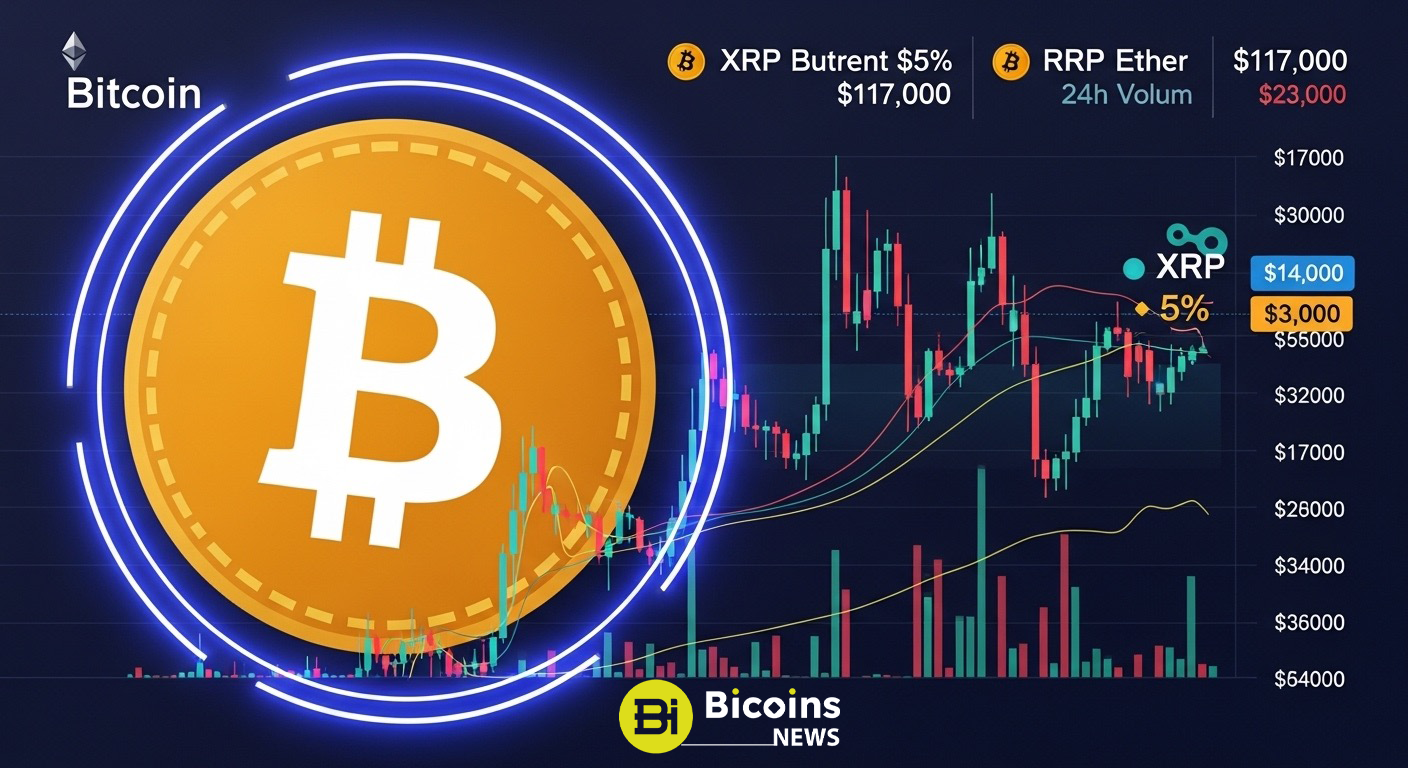As of mid-2024, the cryptocurrency market continues to be led by a handful of dominant players, with Bitcoin (BTC), Ethereum (ETH), and Tether (USDT) maintaining their top positions in terms of market capitalization. This leading group reflects not only sheer market size but also the varied roles these cryptocurrencies play within the digital asset ecosystem.
Bitcoin’s Unmatched Market Capitalization
Bitcoin remains the largest cryptocurrency by market cap, currently valued at over $550 billion. Often referred to as “digital gold,” Bitcoin has solidified its reputation as a store of value, particularly in times of market volatility. Its fixed supply capped at 21 million coins offers a hedge against inflation, attracting investors seeking alternatives to traditional assets like fiat currencies and gold. The resilience of Bitcoin’s network, supported by an extensive global mining infrastructure, underpins this confidence.
Crypto analyst Maria Alonso explained, “Bitcoin’s role as a digital store of value is more firmly established than ever, especially as investors seek alternatives to traditional assets.”
Despite regulatory uncertainties and periodic price fluctuations, Bitcoin’s dominant market share continues to highlight its crucial status in the cryptocurrency ecosystem.
Ethereum: The Foundation of Decentralized Applications
Ethereum holds the second spot with a market cap exceeding $220 billion, reflecting its position as the primary platform for decentralized applications (dApps) and smart contracts. Since its launch in 2015, Ethereum has transformed blockchain from a mere transaction ledger into a programmable infrastructure enabling a wide array of applications.
Dr. Liam Chen, a blockchain expert, noted, “Ethereum’s ongoing upgrades and its expansive decentralized application ecosystem continue to attract developer and investor attention.”
The network upgrade initiatives such as Ethereum 2.0 aim to address issues of scalability and energy efficiency by transitioning from proof-of-work to proof-of-stake consensus. These improvements are critical in supporting the burgeoning decentralized finance (DeFi) sector, non-fungible tokens (NFTs), and enterprise-grade blockchain use cases running on Ethereum’s platform.
Tether and the Rise of Stablecoins
Tether (USDT) dominates the stablecoin category with a market cap north of $70 billion. Unlike Bitcoin and Ethereum, Tether’s value is pegged to fiat currencies, primarily the US dollar, providing price stability and liquidity to the broader cryptocurrency market.
USDT is widely used in trading pairs and transactions within exchanges and decentralized protocols, offering a refuge for investors seeking to mitigate crypto market volatility. Its prevalence underpins much of the daily trading volume, facilitating seamless conversion between cryptocurrencies and fiat.
The stablecoin’s role has grown increasingly important amid tightening regulations and the rising demand for transparent, reliable digital cash alternatives.
Ripple (XRP): Bridging Traditional Finance and Blockchain
Ripple’s XRP has maintained a significant market presence with a valuation around $30 billion. Positioned distinctively for cross-border payments, XRP aims to provide faster, cheaper, and more scalable remittance solutions compared to conventional financial systems.
Ripple Labs, the company behind XRP, has forged partnerships with banks and financial institutions worldwide, seeking to integrate blockchain technology into global payment infrastructure. This approach has differentiated XRP from many other cryptocurrencies focused mainly on retail or speculative use cases.
Despite regulatory challenges, such as ongoing litigation with the U.S. Securities and Exchange Commission, XRP’s market resilience highlights the tangible use cases for blockchain beyond speculative trading.
Binance Coin’s Role Within the Crypto Exchange Ecosystem
Binance Coin (BNB) supports the Binance ecosystem and holds a market cap near $50 billion. As the native token of one of the world’s largest cryptocurrency exchanges, BNB offers various utilities including transaction fee discounts, participation in token sales, and powering Binance Smart Chain (BSC) – a high-performance blockchain platform supporting decentralized applications.
BNB’s growth has been fueled by Binance’s expansive user base and the broad adoption of BSC in the DeFi and NFT sectors. The token’s integration into multiple facets of the Binance ecosystem underpins its significant market capitalization.
Historical Context and Market Evolution
The dominance of these top cryptocurrencies reflects years of technological innovation, widespread adoption, and nuanced navigation of regulatory frameworks. Bitcoin’s invention in 2009 by the pseudonymous Satoshi Nakamoto marked a watershed moment, catalyzing the blockchain revolution and challenging traditional financial paradigms with its decentralized, trustless payment system.
Ethereum’s 2015 introduction of smart contracts dramatically expanded blockchain functionalities, enabling the birth of decentralized finance, tokens, and complex programmable transactions. Stablecoins like Tether emerged as critical infrastructure supporting liquidity and reducing volatility in increasingly complex and volatile crypto markets.
Looking Ahead: Trends and Potential Market Shifts
Looking forward, the cryptocurrency space is poised for further evolution marked by several key trends. Institutional interest is growing as mainstream financial players explore digital assets, signaling potential inflows of significant capital. Regulatory clarity, though still evolving, is expected to provide a more structured environment encouraging innovation while safeguarding investors.
Emerging technologies such as layer-2 scaling solutions aim to increase transaction throughput and reduce fees, addressing two major constraints limiting wider blockchain adoption. Cross-chain interoperability protocols seek to bridge different blockchain networks, enabling seamless asset transfers and data sharing across platforms.
These technical, regulatory, and market developments may foster the rise of new market leaders and potentially reshuffle the ranking order of top cryptocurrencies. The highly dynamic nature of this sector signals that while Bitcoin, Ethereum, USDT, XRP, and BNB currently dominate, the future could unveil new assets and technologies defining the next phase of blockchain-driven transformation.




